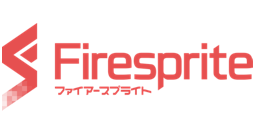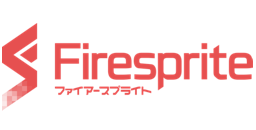There's no 'one ideal route' into game design
![]()
My route into the games industry was a bit unusual in some ways. I’d always enjoyed maths and science and I graduated with a physics degree, but to be honest, I had no idea what I wanted to do after university. I had planned to go travelling and figure things out afterwards, but those plans fell through so more than a year after graduation I found myself with no job and no prospects and… panicked.
I searched for a while for “proper graduate jobs” but without much clear direction, I somehow ended up in accountancy. I did a couple of years of training at one of the larger accountancy firms, working through exams and spending a lot of time working with various businesses. I learned a lot, and if I’d sat out the third year I would have become “Chartered,” but I was miserable. It just wasn’t for me at all, and I knew I had to quit. I paid back my training costs, putting myself in debt, and found myself once again with no idea what I wanted to do at all.
So, I asked myself, what am I really into? Games had been a consistent passion for me since I was a kid, I wanted to explore this as a career option, but honestly, I had no idea how games were even made! I didn’t know anything about the industry, I hadn’t studied it and had never considered it as a serious job option before now. I was in my mid-20s already and had been left feeling completely lost up to this point, but I became determined to find a way to follow my passion.
To be honest, I applied to a lot of different places before I was given my chance. I was lucky enough to find a role at Realtime Worlds, joining the QA team to work on APB™. It was an immediate eye-opener. This was real! Games actually get made, by real people! From day one it was an education. I think I was very naïve in some ways, but I really enjoyed working on that project and we had a really good team – some of whom are also at Firesprite today!
I was in QA for about nine months, and we had a big QA team because it was a live-service multiplayer game. There were close to 100 people testing, but I was one of a handful of “embedded” QA who sat in with the design team and worked with them directly. We would test all the design elements before they went into the main branch, and we gave immediate qualitative feedback. Not just bugs but suggestions and gameplay feedback. I learned by osmosis, just by keeping my eyes and ears open. Eventually a design role became available, and I took it on, initially working on mission content and systems. That’s where my design journey began! Since then, I’ve been proud to work on AAA titles like Watch Dogs™ and Tom Clancy’s The Division™ throughout my career, and I’ve been working in design for fifteen years now, the past five years here at Firesprite.
So, although my path into the industry wasn’t very direct, I think my experiences help to give me a wider perspective. For me, design as a discipline is about connectedness. It’s about the network of interlocking, interrelated things; systems, content, whatever it may be. Sometimes it can seem easier to slice it and dice it into smaller pieces, but the design role is about trying to keep an eye on the big picture. It’s easy to lose that feeling of what makes it all work holistically.
That’s a little philosophical maybe, but that’s how I feel about design and what makes the team and department so important. For example, I work with some fantastic coders who do great systems work, and I work with some amazing artists who blow me away with their talent, but the role of design is to provide balance and consistency across these different disciplines while also trying to deliver the best possible player experience.
Good designers work with and between other disciplines. We look at the different pieces and say “OK, these two bits both work well, but where is the overlap? Where’s the friction between the two?” and find an opportunity to improve things, to streamline things, or to just identify ways to make things more efficient.
If design is working in isolation, then we lose that connectivity, that’s my perception of it anyway. I don’t really have formal training in these things but given my background I tend to be quite logical and mathematical in my approach. Keeping a focus on how things fit together or an understanding that ‘if I change this thing over here it’s going to have these knock-on consequences over here.’ With experience you start to develop a feeling for what works and what doesn’t, and the ability to come up with elegant solutions.
An elegant solution is minimalist. If you’ve got three seemingly unrelated problems and you find the one solution that solves all three of those problems at once, that’s usually the solution that you want to pursue. Good developers from any discipline will be working to solve those individual problems, but working out what they have in common and finding the elegant solution is what design should be doing.
We’re all different though, design is a spectrum. For example, I’m much more of a systems designer than a level designer. Some of my colleagues have a gift for visualizing a 3D space, thinking about how to use a space to guide player experience. So, we try to support each other. When I’m involved in level design reviews, I contribute in terms of the mechanical side of things or how the logic holds together, what the characters are expecting to be happening versus what’s happening. But I’m not the guy you want to talk to about sightlines and awareness of the space around you because I don’t tend to think in those terms. That’s where a well-rounded team with different strengths and perspectives comes into play.
I’m lucky to lead a team of strong designers, and I’m really proud of the team we’ve made here at Firesprite. They’re able to work independently, they’re extremely capable, and we’ve hired quite carefully with that in mind. I don’t honestly consider myself a “natural” manager, but the thing I promised my team on day one is just honesty. We don’t always have to agree, but we need to be able to open up to each other and everybody needs to be comfortable contributing. The team we have is excellent at sharing ideas and being respectful of each other’s contributions. We’re never short of ideas! However, finding the right idea from the field of ten or fifteen competing possibilities is where the challenge is. That’s a real skill, both in being able to find that right idea, but also handling that emotionally because the search for a compromise can be quite draining at times!
For example, if the artists are 100% committed to a particular solution, and the coders are 100% committed to something different, the compromise may only give each of them 80% of what they wanted. It requires a bit of thick skin because you never really feel like you’re giving anybody exactly what they’re asking for. That leaves design vulnerable to that kind of external criticism because it’s visible and obvious for people. I think I’m a bit of an evangelist for design because when it’s done well it’s important and fills a role that other disciplines perhaps don’t. But it’s our responsibility to earn the confidence and trust of the talented developers in other disciplines.
All that said, there’s ultimately only one question that matters - do people like the game? At the end of the day, it’s a product for the players. I think probably it’s fair to say one of my early career mistakes was thinking, ‘my spreadsheet is beautiful, so why doesn’t it play well?’ We can start from a position of idealism, but we need to be willing to adjust things to deliver the best player experience.
So, how do we know when a design works? Well, user testing is increasingly common in the industry and it’s an important part of the toolkit. There is a time where you have to compromise on elements of a design, and player feedback is invaluable for that. But it still takes an experienced eye to understand the actual issues that are being raised during testing, because sometimes player feedback on one thing is actually indicative of something slightly more fundamental and deeper. With user testing, you’re also dealing with limited sample size and of course everybody has their own subjective views, so ultimately good design is a balance of having a clear idea of the game we want, and then trusting our experience as designers. We have to apply that filter to some extent, especially when we’re trying to do something that’s genuinely different and that pushes the boundaries of the genre within the industry.
That is exactly what my team and I set out to do, and I hope that my story proves there is no “one route” or “ideal path” into game development. That your own unique journey can equip you with valuable insights, experience and perspective which can help you shape the next generation of gaming in a role that you’re truly passionate about.




